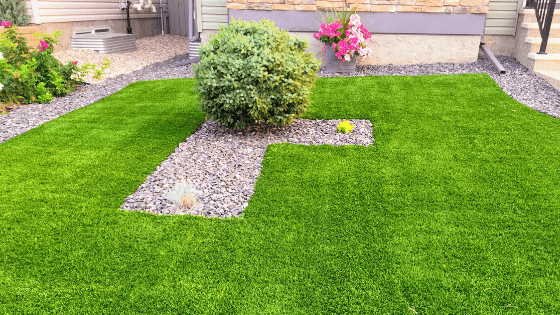It’s fairly obvious to see why artificial grass has become a popular choice for many homeowners. Not only does it need very little maintenance, but, it also survives in all weathers.
No longer will you need to worry about mowing the lawn every other week, children destroying the grass and walking mud through the house, or even frost killing it.
However, before you dive into this project it’s a good idea to know what’s involved. As with many things, being properly prepared makes the job much easier.
Choose The Right Grass
Not all synthetic grass is created equal. You need to use a reputable company that specializes in synthetic grass in Sydney. They’ll guide you through the different types and shades of grass to help ensure you choose the best one for your particular project.
It’s worth taking your time with this stage, the grass you pick you’ll be looking at every day for many years to come.
Remove Grass
Before you can install the artificial grass you need to remove the existing natural grass. You can use a glyphosate-based weedkiller as this kills grass as well as weeds. You’ll need to follow the instructions on the packet.
Alternatively, you can remove the turf. This means manually digging the grassed area and removing the top 1-2 inches of soil. You’ll have to dispose of the grass and your artificial grass will need to be tall enough to fill the gap.

Turning The Soil
Once the grass has been removed or died you can turn the soil. You’ll want to turn the first 1-2 inches of soil over. You can do this by hand or with a machine such as a rotavator.
The aim is to smooth out the ground and get a good base for your artificial grass.
It’s important to remove stones and take your time to ensure the ground is level, you’ll want your artificial grass to remain level after you put it down.
If it’s exceptionally difficult to get it level then you can level the top of it with a thin layer of sand and fine stones.
Compacting
Your artificial grass needs to go on a firm surface or it will warp and buckle. To achieve this you need to go over the area with a garden roller. Do this several times to ensure it is flat and compacted.
You don’t want any cracks or homes that can allow water to collect and damage the artificial grass from underneath.
Equally, if the soil doesn’t drain well you’ll need a layer of sand on top of it to help excess water drain away.
Lay The Artificial Grass
This is the easy part, simply lay the grass down and peg it into position. Make sure the join lines are tidy and give it a few days to ensure it’s settled properly. You can then use it as normal but never need to undertake any maintenance. That’s more time to interact with friends and family
 Kaboutjie SA Mommy Blogs by Lynne Huysamen
Kaboutjie SA Mommy Blogs by Lynne Huysamen




